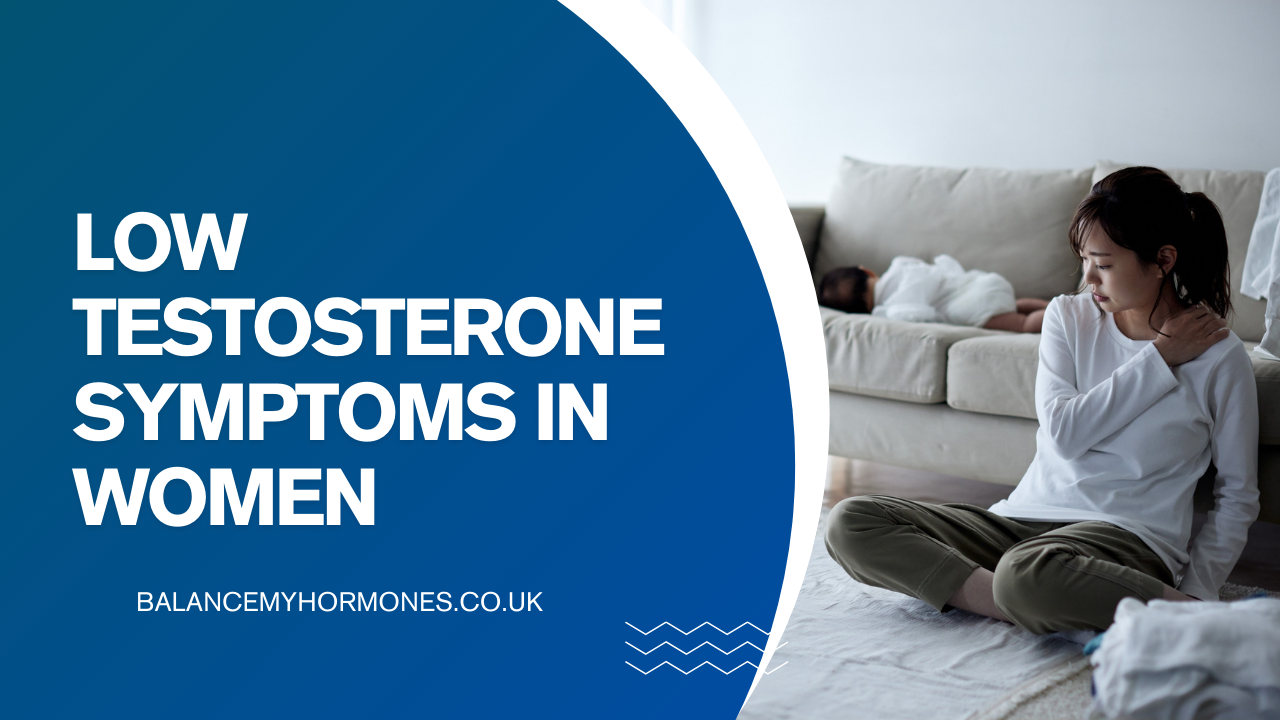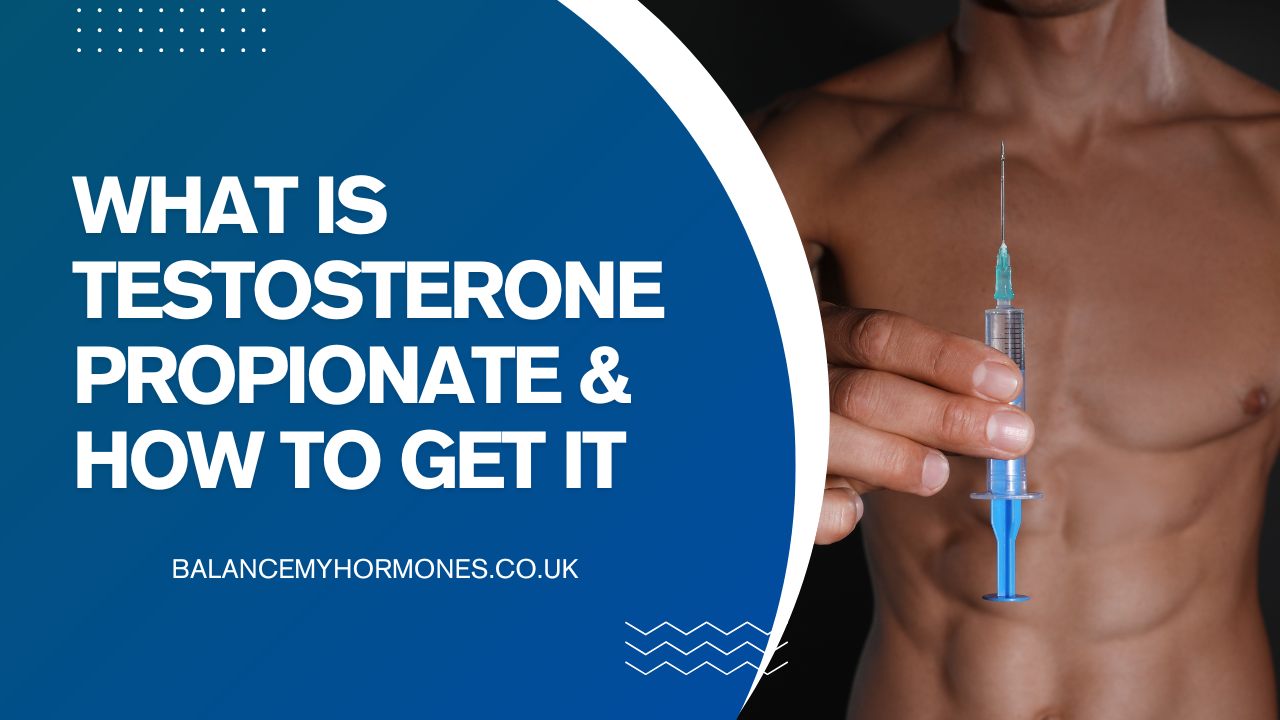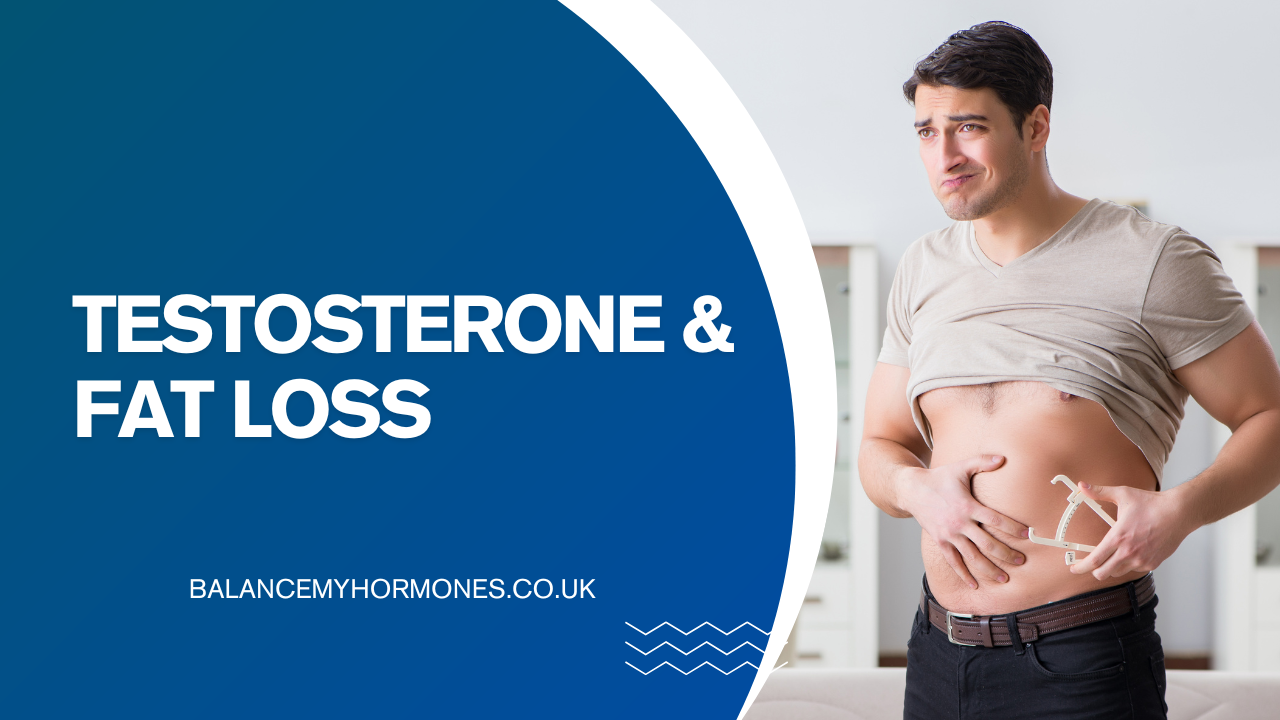
By Mike Kocsis | 7 minutes read | Last updated: September 5, 2025 Categories: Menopause Testosterone
Medically Reviewed by Dr. George Touliatos
Women with low testosterone can experience a variety of symptoms, including poor cognitive function, low sex drive, trouble sleeping and lack of energy.
These symptoms are usually subtle and less intense than the symptoms men with low testosterone experience. But that does not mean they should be left untreated, especially if they are disturbing your life quality.
Testosterone is an essential hormone that does more than you may know. It is involved in maintaining sexual function, mood, muscle mass, bone health and even the menstrual cycle.
That is why, you need to have testosterone within the normal range, not more or less than that.
For women, the normal testosterone levels are 0.5-2.4 nmol/L or 15-70 ng/dL. T levels below this may be considered low in women.
Signs and symptoms of low testosterone in females
Here are the common side effects of low testosterone in women:
Low sexual desire
Testosterone is directly linked to sexual desire in both men and women.
In women, low levels of testosterone can lead to low libido (a reduced interest in sexual activity) and, in some cases, hypoactive sexual desire disorder (HSDD).
They might find that they have less interest in initiating sexual activity or may not respond to sexual cues as they once did.
Women with decreased libido and sexual dysfunction may also have difficulty reaching orgasm and less vaginal lubrication, which can result in a painful sexual experience.
Fatigue and low energy
Since testosterone is involved in energy production, its low levels can lead to low energy production and a feeling of unexplained tiredness. This can contribute to reduced productivity, mental sharpness and motivation.
Mental health problems
Low testosterone itself and also some of its symptoms, like low energy levels and sleep issues, can cause mental health distress.
Testosterone influences many aspects of the brain’s functioning, including mood and stress regulation. Women experiencing low T may find themselves feeling unusually down, depressed, anxious and irritable.
Weight gain
For women, low T can make it challenging to maintain a healthy weight.
Testosterone helps regulate fat distribution and muscle strength. Hence, its low levels can lead to increased body fat and loss of muscle mass (which makes it harder to lose weight).
Weight gain due to hormonal imbalance is often resistant to standard weight loss methods like diet and exercise, making it particularly frustrating for those affected.
Additionally, the increase in fat mass can further decrease testosterone levels, creating a vicious cycle.
Muscle weakness
Testosterone insufficiency in women can lower their muscle mass and strength. This symptom is more common in athletic women.
This may make it harder for women to engage in physical activity or carry out regular tasks that require strength.
Menstrual irregularities
Low T can lead to irregular menstrual cycles or amenorrhea, the absence of menstruation. This is because testosterone, along with other reproductive hormones, plays a role in regulating the menstrual cycle.
Decreased fertility
Testosterone is a sex hormone required for the normal functioning of the female reproductive system, including ovulation.
Low levels can affect fertility by disrupting menstrual periods or affecting the ovaries’ ability to produce eggs. This can make it difficult for women trying to conceive.
Bone density decrease
Low testosterone levels may cause a decrease in bone mineral density and bone strength that increases the risk of osteoporosis and fractures.
This is especially concerning for women because they are more likely to develop osteoporosis compared to men due to the significant hormonal changes they experience during menopause.
Sleep disturbances
Testosterone influences sleep patterns. Its deficiency may cause sleep disturbances, including trouble falling asleep or staying asleep.
These sleep issues can further aggravate other low T signs like physical fatigue, moodiness, and depression.
Reduced cognitive function
Studies show that testosterone is involved in maintaining cognitive function. So naturally, when women have insufficient testosterone, they can have trouble concentrating and focusing on regular tasks.
Experiencing one or more of these symptoms does not necessarily mean you have low T. Many of these signs can have other underlying causes, such as thyroid conditions, type 2 diabetes and infections.
Doctors diagnose the actual cause of these signs via tests and medical analysis and start a treatment based on the identified problem.
What causes low testosterone in women?
Here are the common causes of low T in females:
Age
Low T can happen for multiple reasons but age is one of its most common causes.
Both men and women experience hormonal shifts as they get older but women’s hormonal changes are more prominent comparatively.
Testosterone is produced in the ovaries in women. As women get older, their ovarian function declines. So naturally, their testosterone levels decline as well, leading to a hormonal imbalance.
That is why postmenopausal women are most at risk of low T.
Adrenal disorders
Adrenal glands are one of the main factories of testosterone. Hence, conditions affecting them, such as Addison’s disease or adrenal insufficiency, can disrupt testosterone production.
Bilateral oophorectomy
Some women get their ovaries removed surgically for health-related reasons, which causes surgical menopause.
As the ovaries are a source of testosterone in women, having them removed can cause low T.
Hypopituitarism
Some women have an underactive pituitary gland (a gland that supports testosterone production by sending signals to other glands). Their adrenal glands fail to produce enough testosterone.
Certain medications
Some forms of hormonal birth control, such as certain oral contraceptives or intrauterine devices (IUDs), can suppress testosterone production.
Other than that, medications such as corticosteroids, opioids, or some antidepressants can also interfere with testosterone synthesis.
Unhealthy lifestyle habits
Chronic stress, excessive alcohol consumption, lack of sleep and poor diet can also contribute to low T in women.
How is low testosterone diagnosed in women?
Doctors usually take the following steps to diagnose low T:
Medical history: Doctors ask you questions related to your symptoms, medical conditions (if you have any), reproductive history and related lifestyle factors to assess your current health.
Physical examination: A physical examination may be performed to assess common signs and other symptoms that are associated with low T.
Blood tests: Healthcare providers measure your androgen hormone levels through blood tests. However, the results of these tests can vary as hormone levels fluctuate throughout the day. So, doctors may take more than one testosterone test to confirm hormone levels.
They may also check your sex hormone binding globulin, follicle-stimulating hormone and luteinizing hormone levels to rule out the cause.
Take our quick Hormone Quiz now to learn what your symptoms say about your health. You can also order hormone tests via our website. Check our test packages to see which one suits your needs the best.
What is the low T treatment for women?
Many women with androgen deficiency (low T) don’t require treatment because their symptoms are mild and manageable.
But if your symptoms are disturbing the quality of your life, your doctor may prescribe testosterone replacement therapy (TRT) when standard HRT doesn’t work.
TRT is a licensed treatment used for treating low testosterone in men, but some doctors may also prescribe it on an off-label basis for women. They prescribe male-licensed testosterone gels or creams like Testogel/Tostran in low doses.
In August 2025, MHRA approved AndroFeme, a female-specific testosterone cream, for postmenopausal women with hypoactive sexual desire disorder (HSDD). It’s not available on the NHS yet, but you can access it privately if you are eligible.
TRT for women comes with potential side effects that’s why it should only be taken under medical supervision. It is important to carefully monitor your hormone levels, symptoms and overall health while taking testosterone treatment.
If low testosterone is due to underlying medical conditions such as polycystic ovary syndrome (PCOS), adrenal disorders, or pituitary dysfunction, treating the underlying condition may help restore hormonal balance.
This may involve medications to regulate your levels or manage symptoms associated with the condition.
What are the natural ways to increase testosterone in women?
For women with slightly low T, doctors may suggest improving lifestyle and adopting healthy habits to restore testosterone naturally.
Some of the natural ways that may help increase testosterone are:
- Regular exercise, such as strength training and high-intensity interval training
- Reduce weight (if you are overweight) and maintain your weight within a healthy range
- Balanced diet consisting of adequate proteins, healthy fats and essential micronutrients
- Manage stress with stress relief exercises or techniques
- Consistently have 7 to 9 hours of sleep
- Avoid drug abuse and excessive alcohol consumption
These natural methods do not guarantee a testosterone boost, but they may assist in improving your hormone balance. They are not a substitute for medical treatment.
Patients often ask: I am a woman with low testosterone levels. What should I do?
If you are a woman experiencing symptoms of testosterone deficiency, it is important to take proactive steps to improve your overall well-being. Here is what you can do:
- Consult with a healthcare provider
- Undergo evaluation
- Educate yourself
- Discuss treatment options
- Follow treatment recommendations
- Address lifestyle factors
- Seek emotional support
- Connect with support groups
Talk to one of our hormone specialists today to discuss your health concerns and find possible solutions.
FAQs about low testosterone signs in women
Does low testosterone in women cause weight gain?
Yes, low testosterone can cause weight gain in women by causing fat accumulation and reducing muscle mass.
Does low testosterone cause hair loss in females?
Hair loss is a common side effect of excess androgen activity, particularly dihydrotestosterone (DHT), rather than low testosterone. But in rare cases, very low T levels may also cause hair problems due to reduced anabolic support for hair follicles.
Does low testosterone cause tiredness?
Yes, feeling tired for no specific reason is one of the common causes of low T.
Can low testosterone affect menstrual cycle?
Yes, low testosterone can disturb the menstrual cycle and cause irregular periods, lighter bleeding, missed cycles or changes in cycle length.
How to check testosterone levels in women?
Testosterone blood tests are used to measure total testosterone and free testosterone levels in women.
Summary
Low testosterone levels in women can manifest through a variety of signs and symptoms. Some of these are reduced libido, fatigue, mood swings, weight gain, muscle weakness and menstrual irregularities.
Women with low T often don’t need treatment. But if your symptoms are severe, then your doctor may prescribe hormone therapy to ease your symptoms and restore hormone levels.
We are a licensed TRT provider in the UK and have been helping men and women restore hormone balance for several years now. Talk to our team to learn more about our treatment options.
References
Donovitz, G.S., 2022. A personal prospective on Testosterone therapy in women—What we know in 2022. Journal of Personalized Medicine, 12(8), p.1194.
Wierman, M.E., Arlt, W., Basson, R., Davis, S.R., Miller, K.K., Murad, M.H., Rosner, W. and Santoro, N., 2014. Androgen therapy in women: a reappraisal: an Endocrine Society clinical practice guideline. The Journal of Clinical Endocrinology & Metabolism, 99(10), pp.3489-3510.
Evidence Based Research
This article has been researched and written based on scientific evidence and fact sheets that have then been crossed checked by our team of doctors and subject matter experts.
References, sources and studies used alongside our own in-house research have been cited below, most of which contain external clickable links to reviewed scientific paper that contain date stamped evidence.
Our team of healthcare experts and GMC registered doctors are licensed to UK GMC standards. We strive to provide you with the latest evidence based, researched articles that are unbiased, honest and provide you with accurate insights, statistics and helpful information on the discussed topic to ensure you gain a better understanding of the subject. You can read more about our Editorial Process by clicking here.
We value your feedback on our articles, if you have a well-researched paper you would like to share with us please contact us.
Quick Low Testosterone Test
If you know your total testosterone reading from a previous blood test input the results to the left above to see if your testosterone levels are normal.
Low Testosterone Levels
You may have low testosterone depending on the symptoms you have, please contact us to find out how we can help.
Please Retry
The Total Testosterone Level You Entered Is Incorrect. Figure Must be in nmol/L you can use our converter here.
Normal Testosterone Levels
Your testosterone levels appear to be in the normal range.
LOOKING GOOD!
You must be over 38, have had your ovaries removed or have suffered with premature menopause to warrant further hormone tests.
Further investigation needed
Please contact us to discuss your hormones, we need your total testosterone levels to validate your hormone deficiency. You can order a blood test here.
Low Testosterone Levels
You may have low testosterone depending on the symptoms you have, please contact us to find out how we can help.
High Testosterone Levels
You appear to have higher than normal testosterone levels, please contact us for further investigation.
Normal Testosterone Levels
You appear to have normal testosterone levels. Contact us if you have any concerns.


 Mike Kocsis has an MBA with a focus on healthcare administration and is an entrepreneur and medical case manager for Balance My Hormones which offers medical services in the UK and Europe. Mike has over 20 years of experience in the healthcare sector, much of that working with people who have hormone imbalances. Mike has appeared on
Mike Kocsis has an MBA with a focus on healthcare administration and is an entrepreneur and medical case manager for Balance My Hormones which offers medical services in the UK and Europe. Mike has over 20 years of experience in the healthcare sector, much of that working with people who have hormone imbalances. Mike has appeared on 

